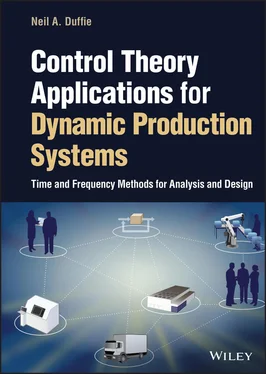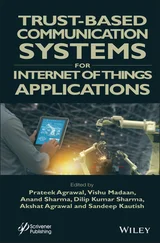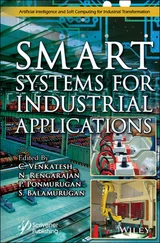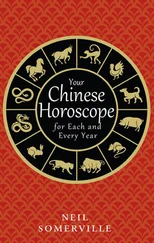Neil A. Duffie - Control Theory Applications for Dynamic Production Systems
Здесь есть возможность читать онлайн «Neil A. Duffie - Control Theory Applications for Dynamic Production Systems» — ознакомительный отрывок электронной книги совершенно бесплатно, а после прочтения отрывка купить полную версию. В некоторых случаях можно слушать аудио, скачать через торрент в формате fb2 и присутствует краткое содержание. Жанр: unrecognised, на английском языке. Описание произведения, (предисловие) а так же отзывы посетителей доступны на портале библиотеки ЛибКат.
- Название:Control Theory Applications for Dynamic Production Systems
- Автор:
- Жанр:
- Год:неизвестен
- ISBN:нет данных
- Рейтинг книги:5 / 5. Голосов: 1
-
Избранное:Добавить в избранное
- Отзывы:
-
Ваша оценка:
- 100
- 1
- 2
- 3
- 4
- 5
Control Theory Applications for Dynamic Production Systems: краткое содержание, описание и аннотация
Предлагаем к чтению аннотацию, описание, краткое содержание или предисловие (зависит от того, что написал сам автор книги «Control Theory Applications for Dynamic Production Systems»). Если вы не нашли необходимую информацию о книге — напишите в комментариях, мы постараемся отыскать её.
Apply the fundamental tools of linear control theory to model, analyze, design, and understand the behavior of dynamic production systems Control Theory Applications for Dynamic Production Systems: Time and Frequency Methods for Analysis and Design,
Control Theory Applications for Dynamic Production Systems
Control Theory Applications for Dynamic Production Systems — читать онлайн ознакомительный отрывок
Ниже представлен текст книги, разбитый по страницам. Система сохранения места последней прочитанной страницы, позволяет с удобством читать онлайн бесплатно книгу «Control Theory Applications for Dynamic Production Systems», без необходимости каждый раз заново искать на чём Вы остановились. Поставьте закладку, и сможете в любой момент перейти на страницу, на которой закончили чтение.
Интервал:
Закладка:
Chapter 3 Transfer Functions and Block Diagrams . Use of the Laplace transform and Z transform to convert continuous-time differential equation models and discrete-time difference equation models, respectively, into relatively more easily analyzed algebraic models is introduced. The concept of continuous-time and discrete-time transfer functions is introduced, as is their use in block diagrams that clearly illustrate dynamic characteristics, cause–effect relationships between the inputs and outputs of production systems and their components, delay, and closed-loop topologies. Transfer function algebra is reviewed along with methods for defining transfer functions in control system engineering software.
Chapter 4 Fundamental Dynamic Characteristics and Time Response . Fundamental dynamic characteristics of production system and component models are defined including time constants, damping ratios, and natural frequencies. The significance of the roots of characteristic equations obtained from transfer functions is reviewed, including using the roots to assess stability. Methods are presented for using continuous-time and discrete-time transfer functions to calculate the response of production systems as a function of time and determine characteristics such as settling time and overshoot in oscillation, with practical emphasis on use of control system engineering software.
Chapter 5 Frequency Response . Methods are presented for using transfer functions to calculate the response of production systems and their components to sinusoidal inputs that represent fluctuations in variables such as demand. Characteristics of frequency response that are important in analysis and design are defined including bandwidth, zero-frequency magnitude, and magnitude and phase margins. Theoretical foundations are presented, with practical emphasis on using control system engineering software to calculate and analyze frequency response.
Chapter 6 Design of Decision Making for Closed-Loop Production Systems . Approaches for design of decision making for closed-loop production systems using time response, transfer functions, and frequency response are introduced. Design for common closed-loop production system topologies is reviewed, and approaches such as PID control, feedforward control, and cascade control are introduced. Challenges and options for decision making in systems with significant time delays are addressed, and the use of control system engineering software in design is illustrated with examples.
Chapter 7 Application Examples . Examples are presented in which analysis and design of the dynamic behavior is of higher complexity, requiring approaches such as use of matrices of transfer functions and modeling using multiple sampling rates. The examples illustrate analysis and design from both the time and frequency perspectives. In the first application example, the potential for improving performance by using digital technologies to reduce delays in a replanning cycle is explored. Other application examples then are presented that illustrate analysis and design production systems with multiple inputs and outputs, networks of production systems with information sharing, and production systems with multiple closed loops.
After becoming familiar with the material presented in this book, production engineers can expect to be able to apply the basic tools of control theory and control system engineering software in modeling, analyzing, and designing the dynamic behavior of production systems, as well as significantly contribute to control system engineering applications in production industries.
Acknowledgments
I am grateful to many former graduate students and international research associates in my laboratory for the fruitful discussions and collaboration we have had on topics related to this book. I am particularly indebted to Professor Hans-Peter Wiendahl (1938–2019) for his inspiring encouragement of the research that culminated in this book, which is dedicated to him; he is greatly missed. Professor Katia Windt provided indispensable feedback regarding the contents of this book and its focus on production systems, and I owe much to collaborations with her and Professors Julia Arlinghaus, Michael Freitag, Gisela Lanza, and Bernd Scholz-Reiter. I thank the Department of Mechanical Engineering of the University of Wisconsin-Madison for the environment that made this book possible and, above all, I am deeply indebted to my wife Colleen for her companionship and her unwavering support of my research and the writing of this book.
1 Introduction
To remain competitive, today’s industries need to adapt to increasingly dynamic and turbulent markets. Dynamic production systems 1and networks need to be designed that respond rapidly and effectively to trends in demand and production disturbances. Digitalization is transforming production planning, operations, control, and other functions through extensive use of digitized data, digital communication, automatic decision-making, simulation, and software-based decision-making tools incorporating AI algorithms. New sensing, communication, and actuation technologies are making new types of measurements and other data available, reducing delays in decision-making and implementing decisions, and facilitating embedding of models to create more “intelligent” production systems with improved performance and robustness in the presence of turbulence in operating conditions.
In this increasingly dynamic and digital environment, production engineers and managers need tools that allow them to mathematically model, analyze, and design production systems and the strategies, policies, and decision-making components that make them responsive and robust in the presence of disturbances in the production environment, and mitigate the negative impacts of these disturbances. Discrete event simulation, queuing networks, and Petri nets have proved to be valuable tools for modeling the detailed behavior of production systems and predicting how important variables vary with time in response to specific input scenarios. However, these are not convenient tools for predicting fundamental dynamic characteristics of production systems operating under turbulent conditions. Large numbers of experiments, such as discrete event simulations with random input scenarios, often must be used to draw reliable conclusions about dynamic behavior and to subsequently design effective decision rules. On the other hand, measures of fundamental dynamic characteristics can be obtained quickly and directly from control theoretical models of production systems. Dynamic characteristics of interest can include
time required for a production system to return to normal operation after disturbances such as rush orders or equipment failures (settling time)
difference between desired values of important variables in a production system and actual values (error)
tendency of important variables to oscillate (damping) or tendency of decision rules to over adjust (overshoot)
whether disturbances that occur at particular frequencies cause excessive performance deviations (magnification) or do not significantly affect performance (rejection)
over what range of frequencies of turbulence in operating conditions the performance of a production system is satisfactory (bandwidth).
Unlike approaches such as discrete event simulation in which details of decision rules and the physical progression of entities such as workpieces and orders through the system often are modeled, control theoretical models are developed using aggregated concepts such as the flow of work. The tools of control system engineering can be applied to the simpler, linear models that are obtained, allowing decision-making to be directly designed to meet performance goals that are defined using characteristics such as those listed above. Experience has shown that the fidelity of this approach often is sufficient for understanding the fundamental dynamic behavior of production systems and for obtaining valuable, fundamentally sound, initial decision-making designs that can be improved with more detailed models and simulations.
Читать дальшеИнтервал:
Закладка:
Похожие книги на «Control Theory Applications for Dynamic Production Systems»
Представляем Вашему вниманию похожие книги на «Control Theory Applications for Dynamic Production Systems» списком для выбора. Мы отобрали схожую по названию и смыслу литературу в надежде предоставить читателям больше вариантов отыскать новые, интересные, ещё непрочитанные произведения.
Обсуждение, отзывы о книге «Control Theory Applications for Dynamic Production Systems» и просто собственные мнения читателей. Оставьте ваши комментарии, напишите, что Вы думаете о произведении, его смысле или главных героях. Укажите что конкретно понравилось, а что нет, и почему Вы так считаете.












